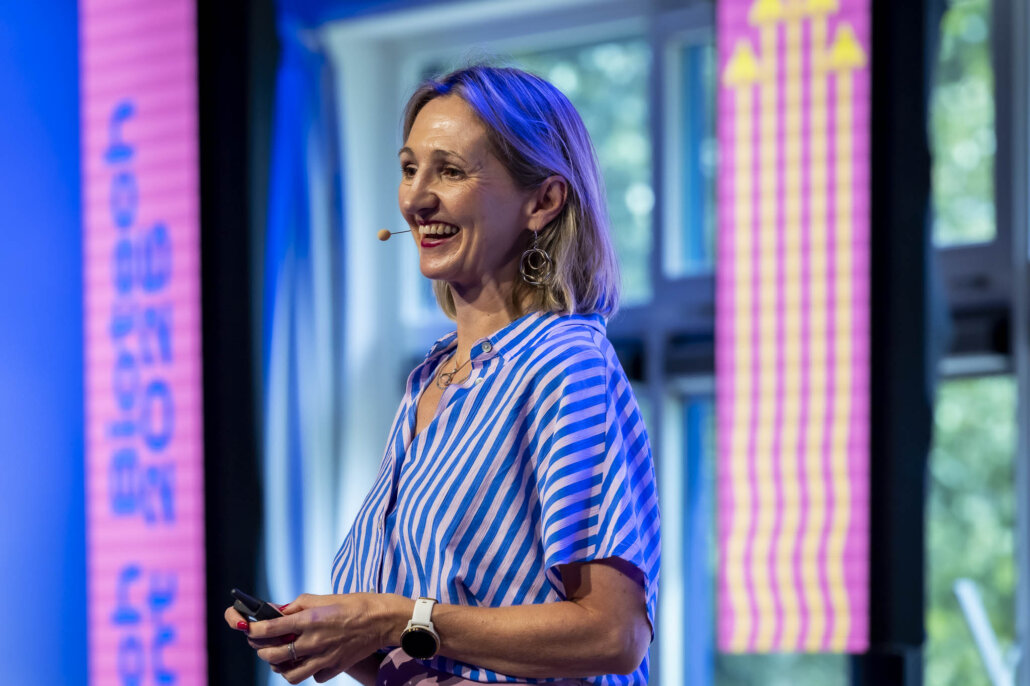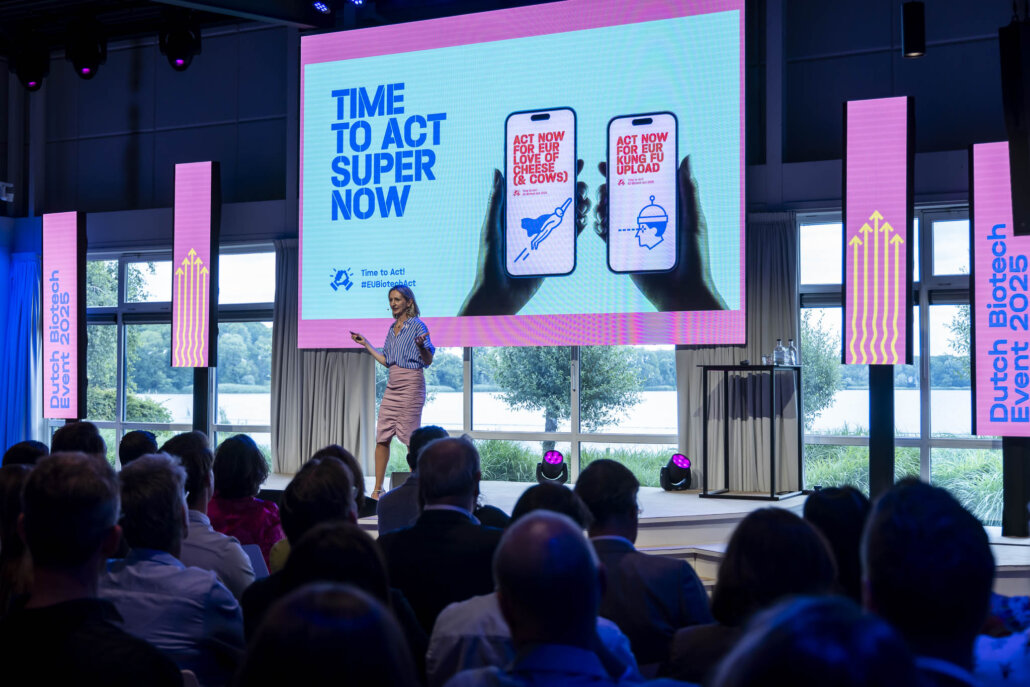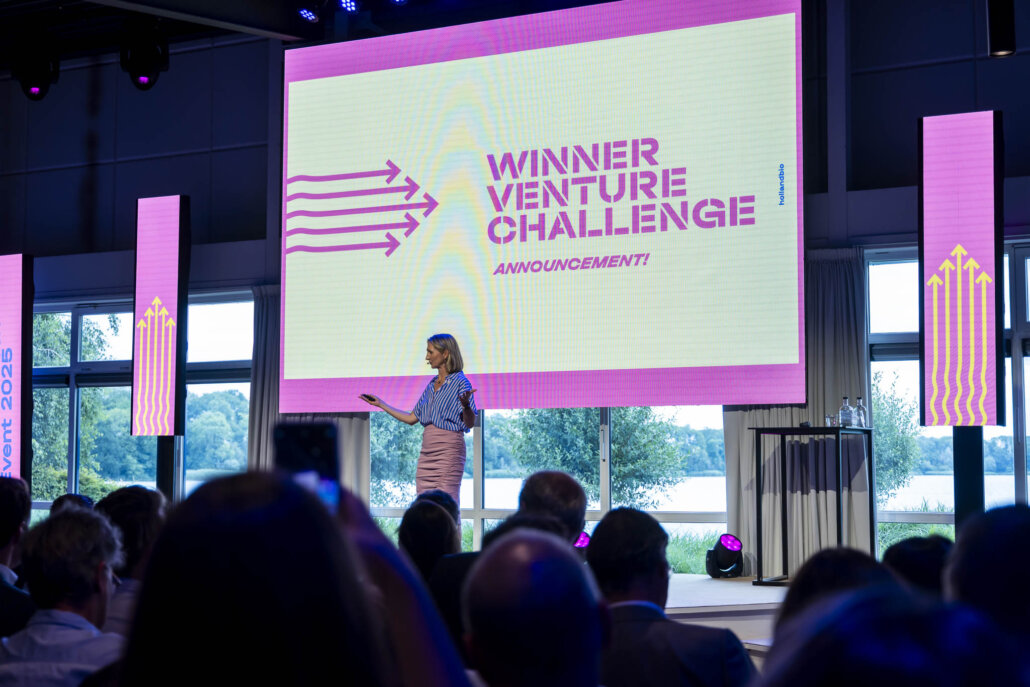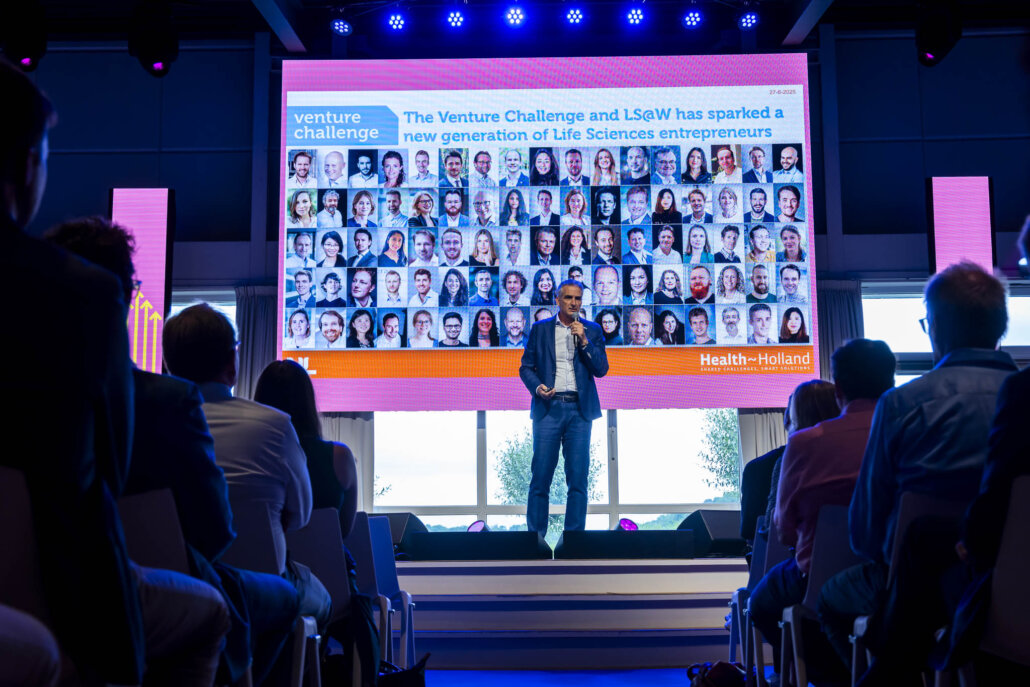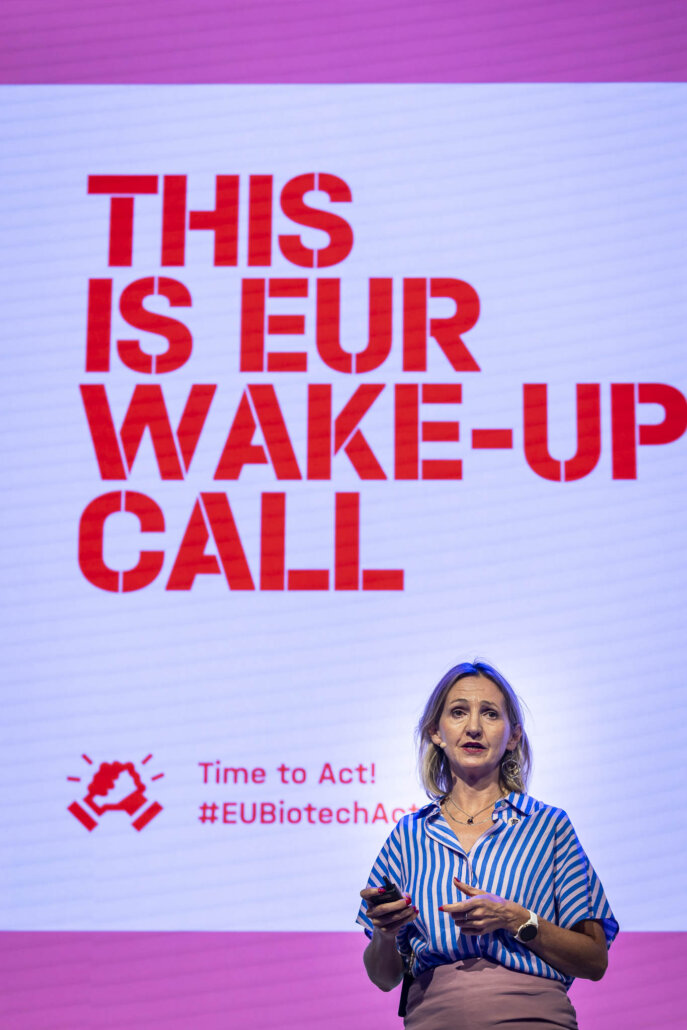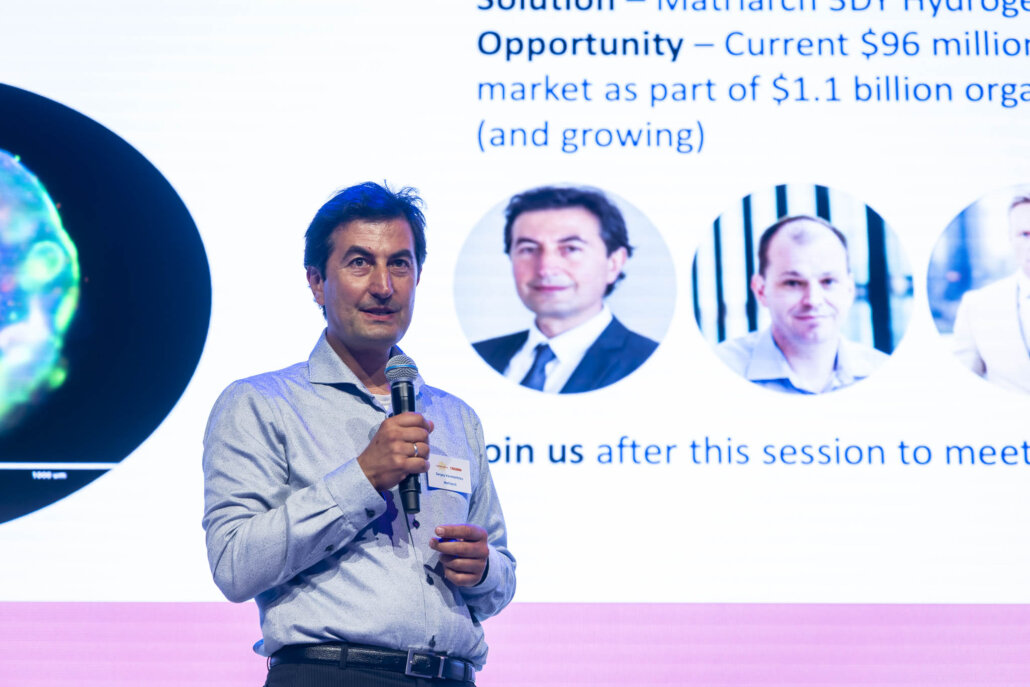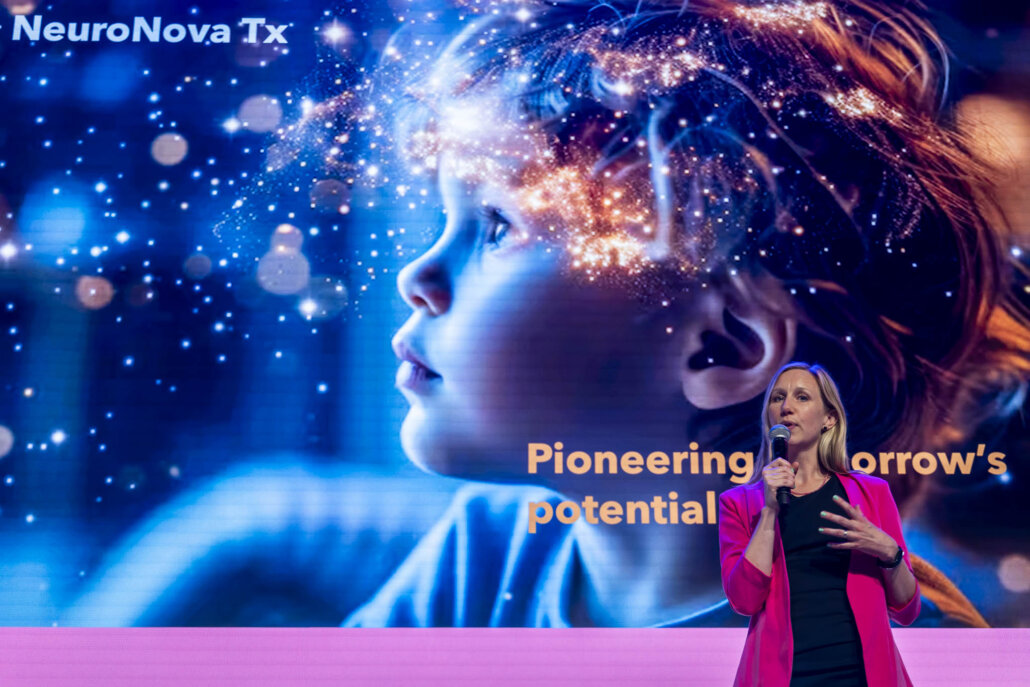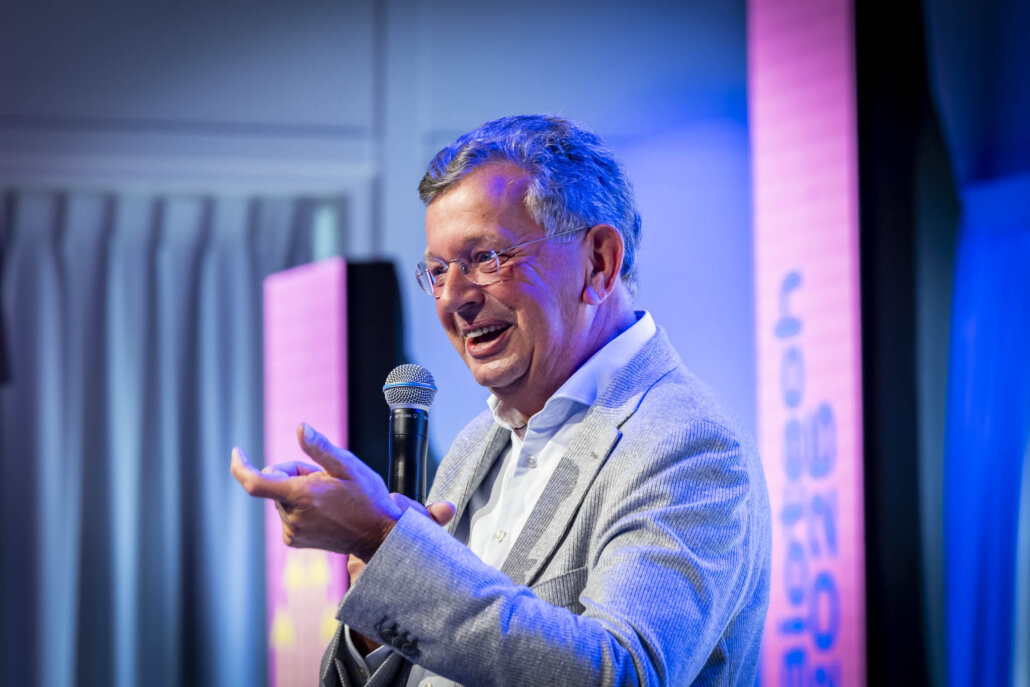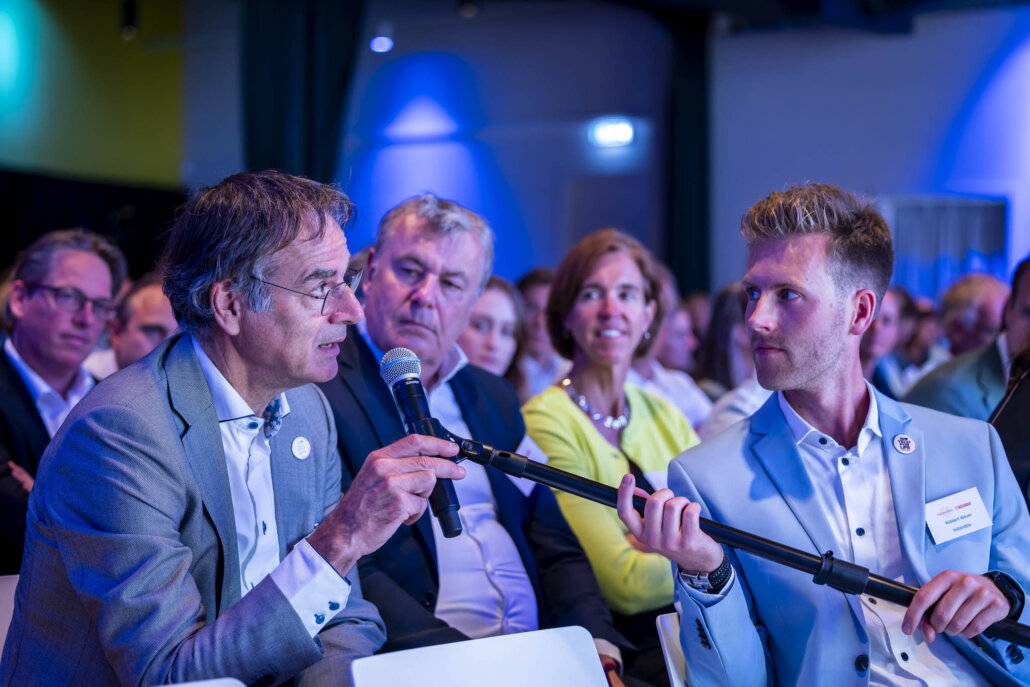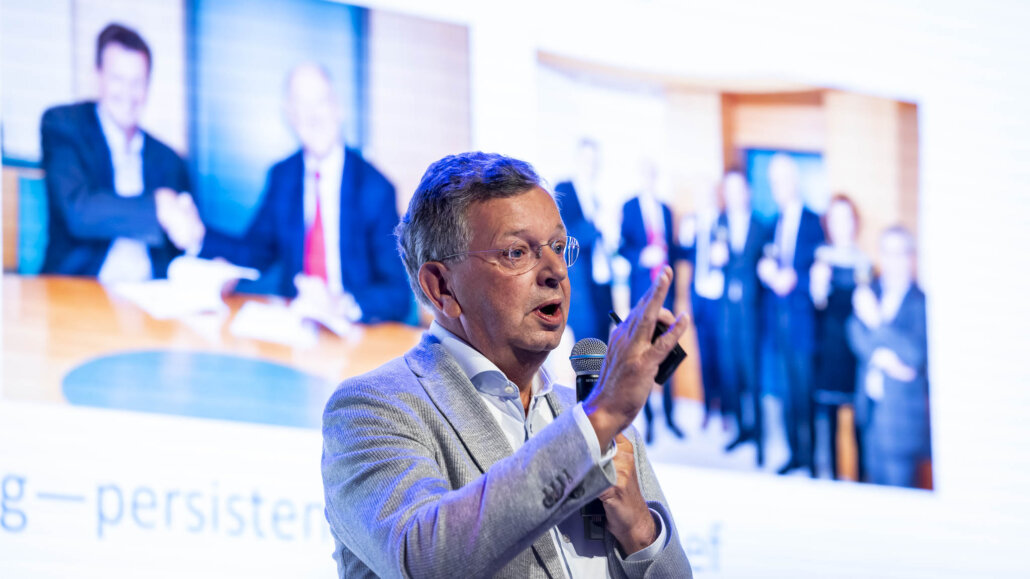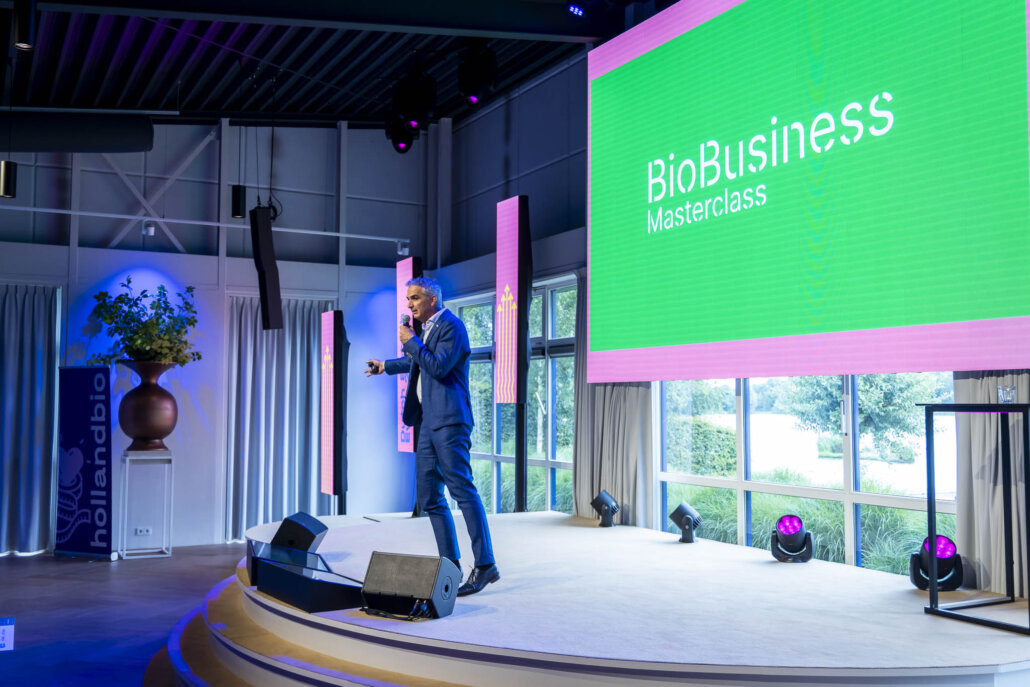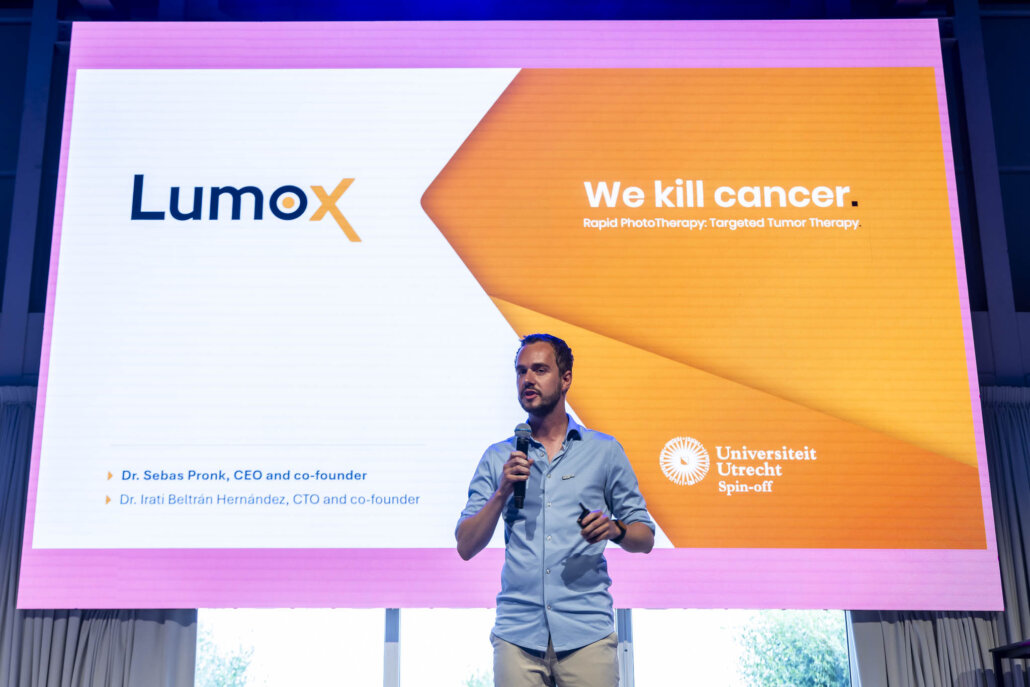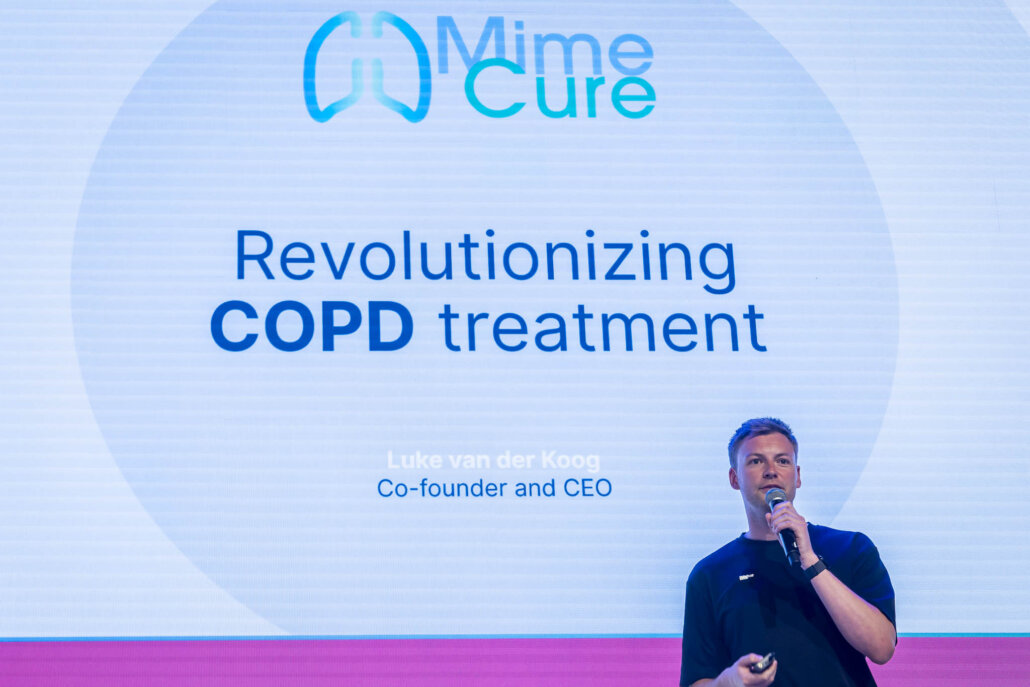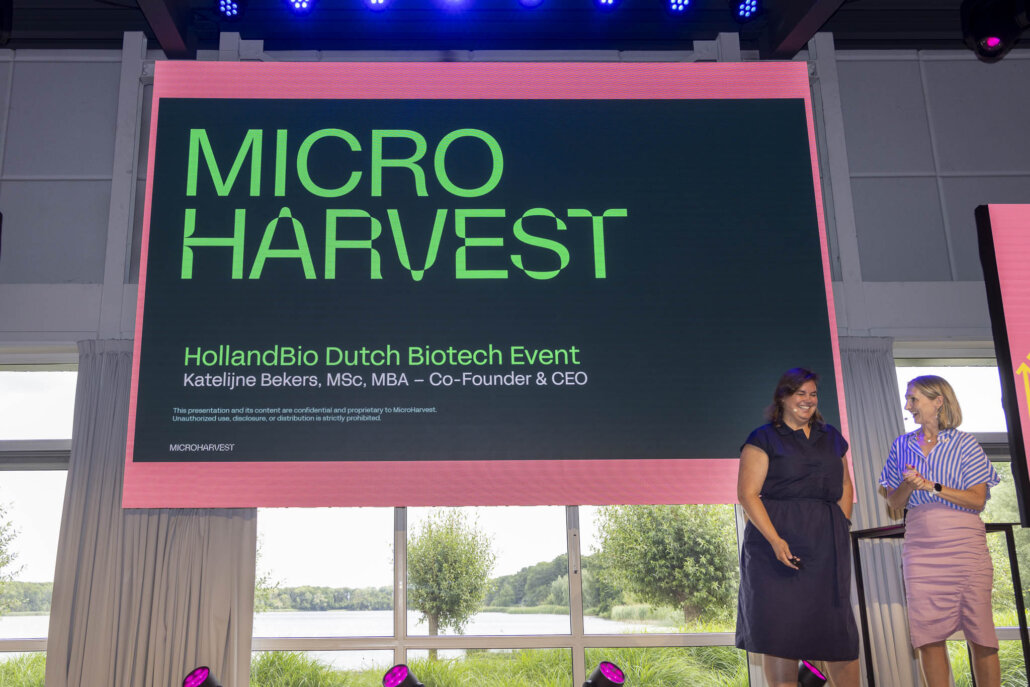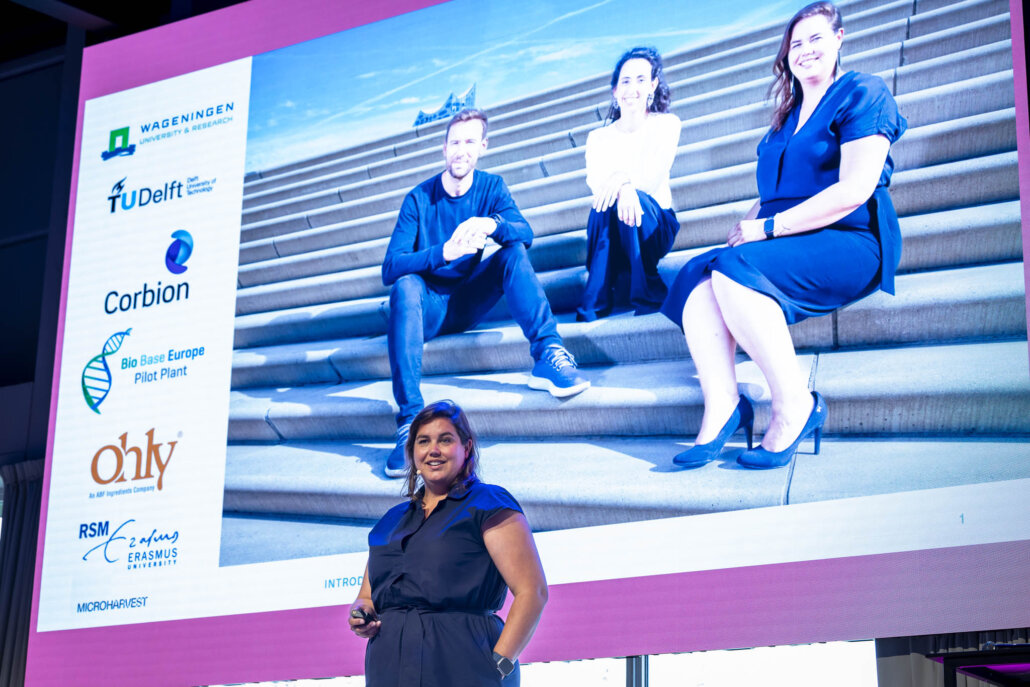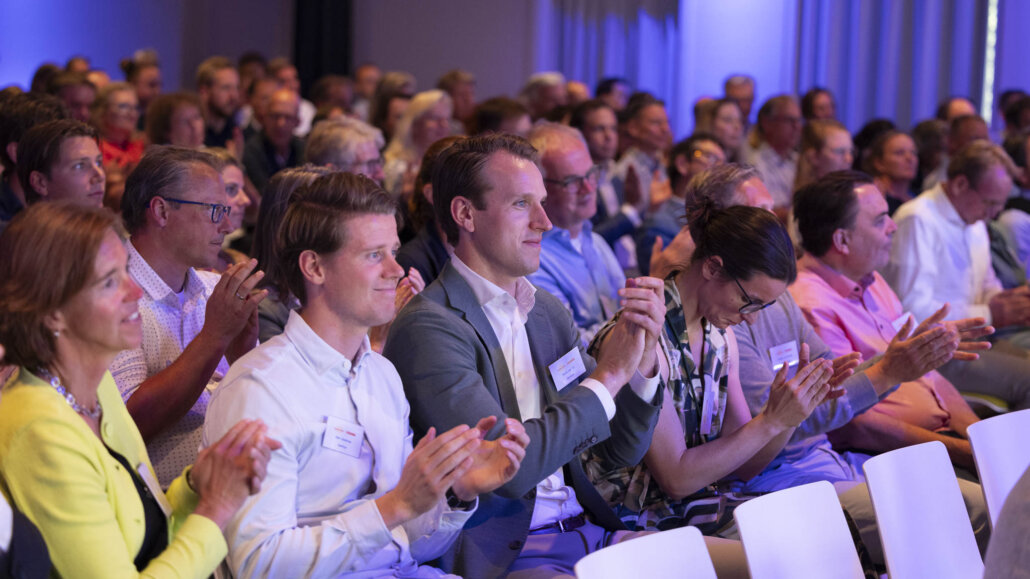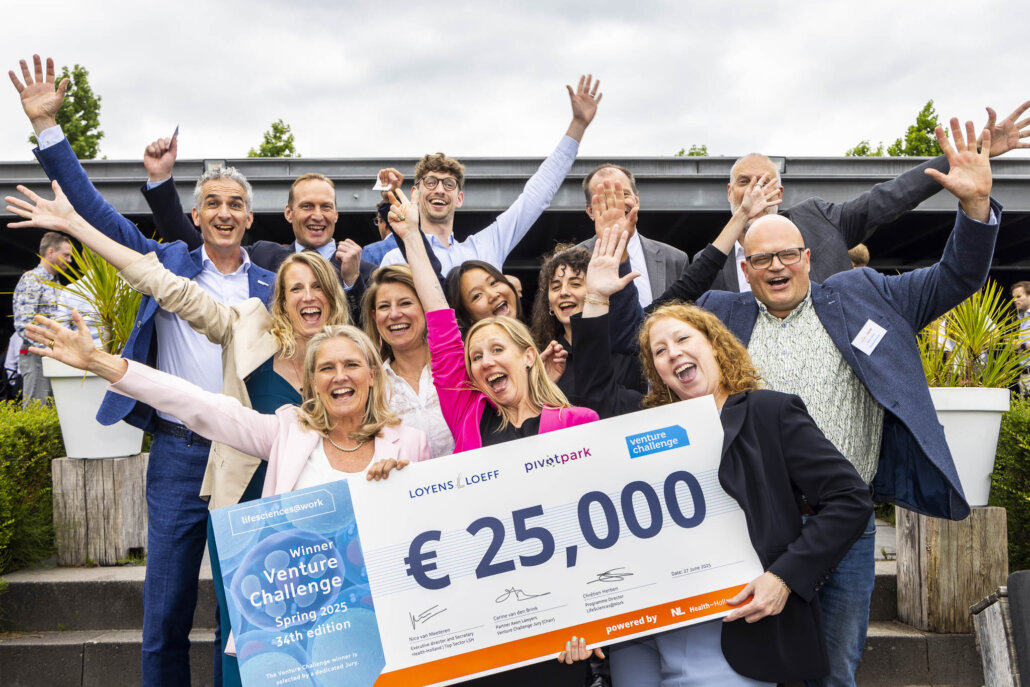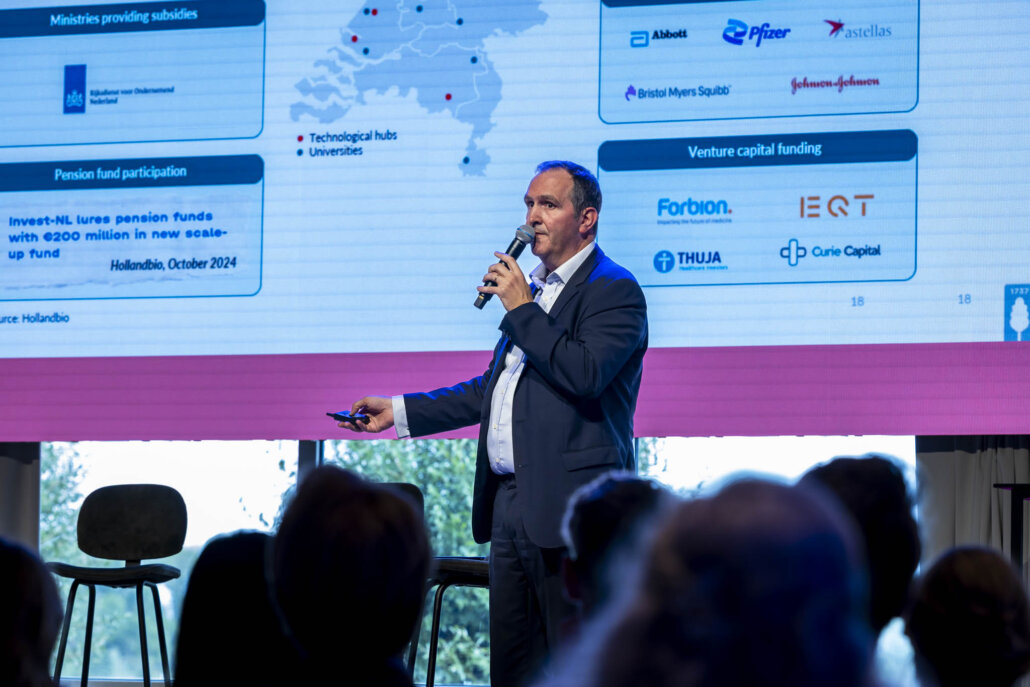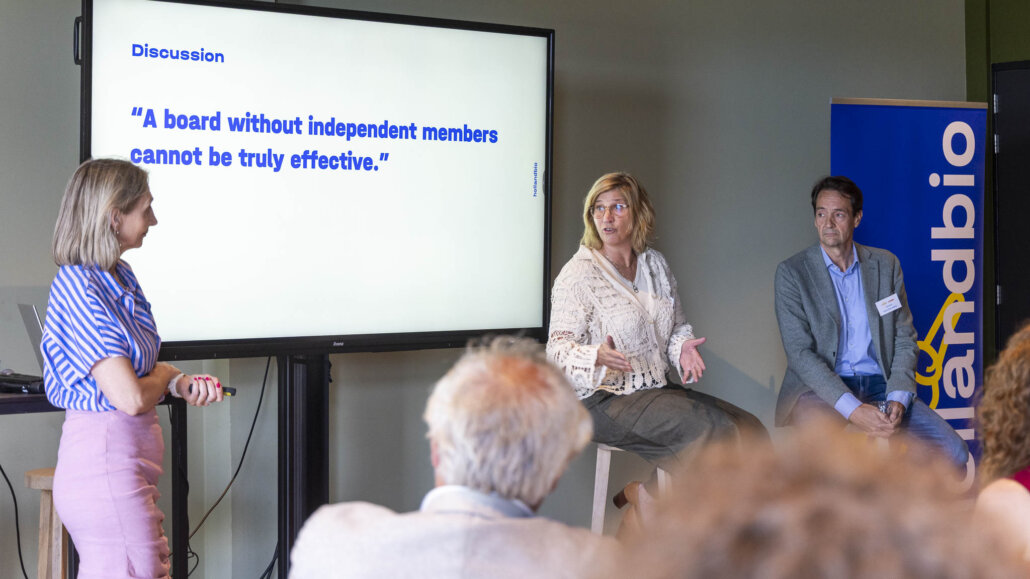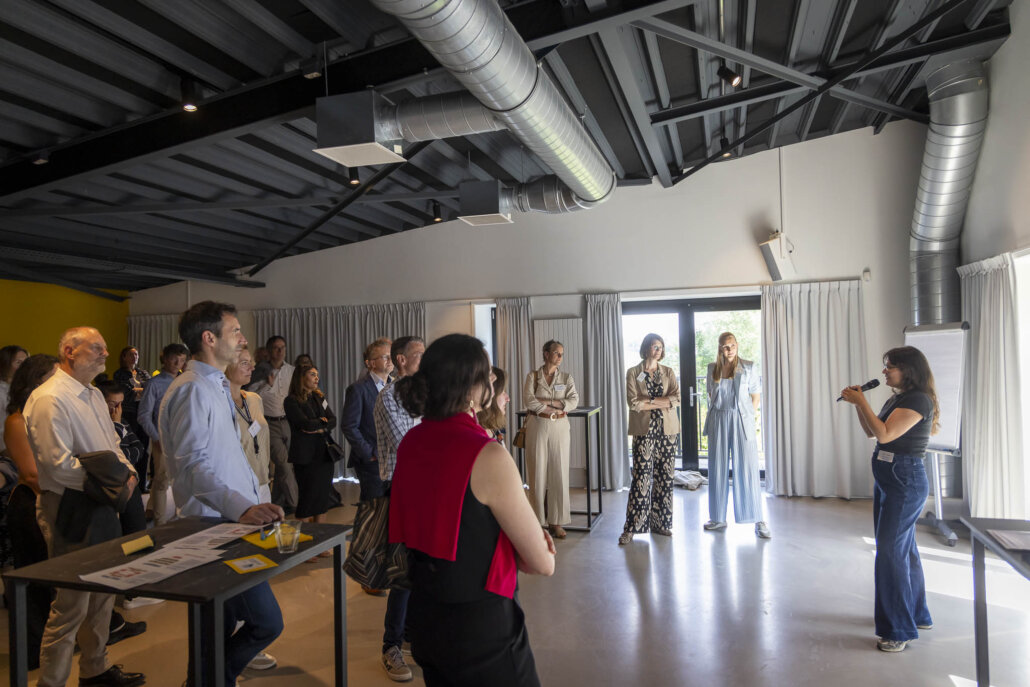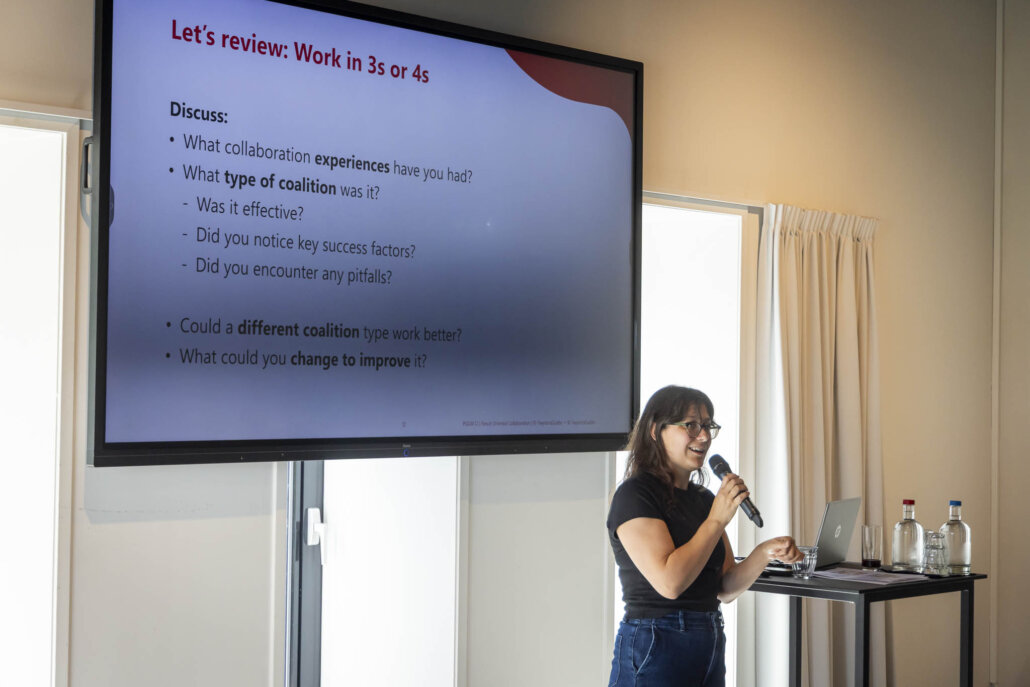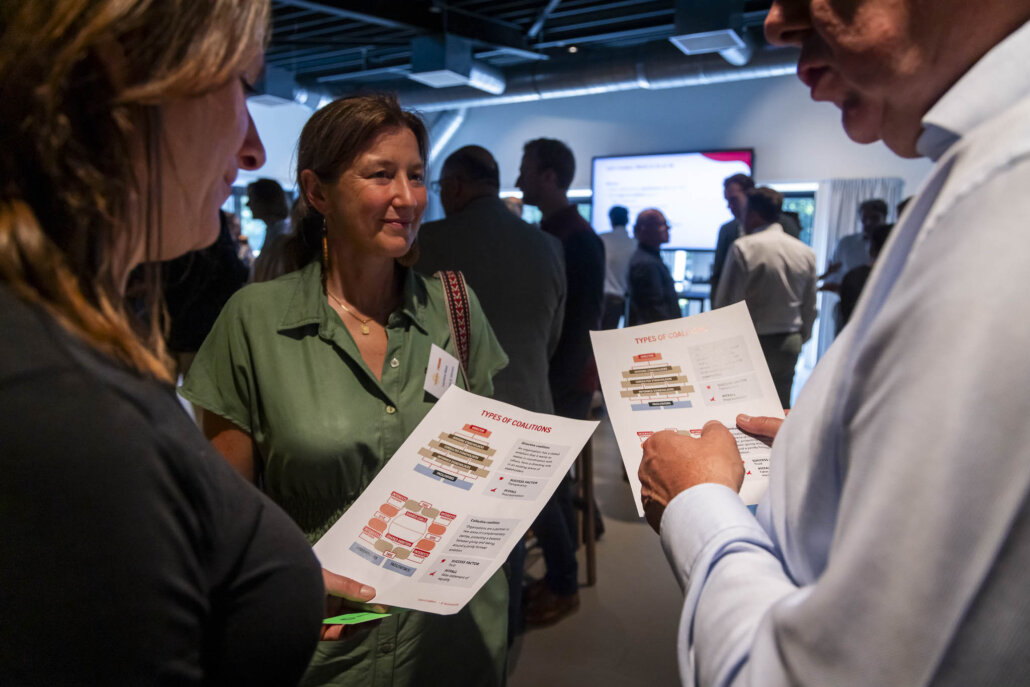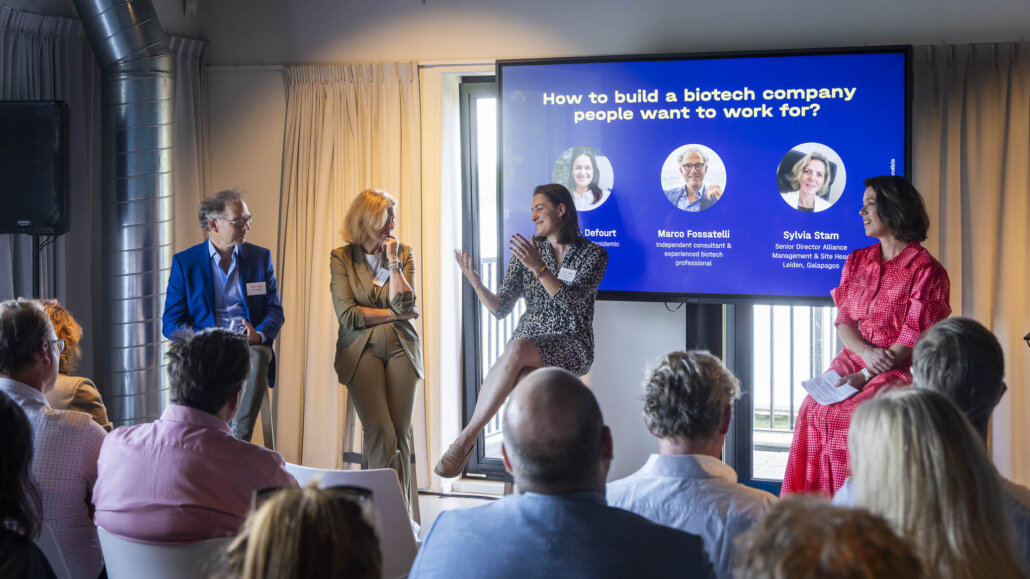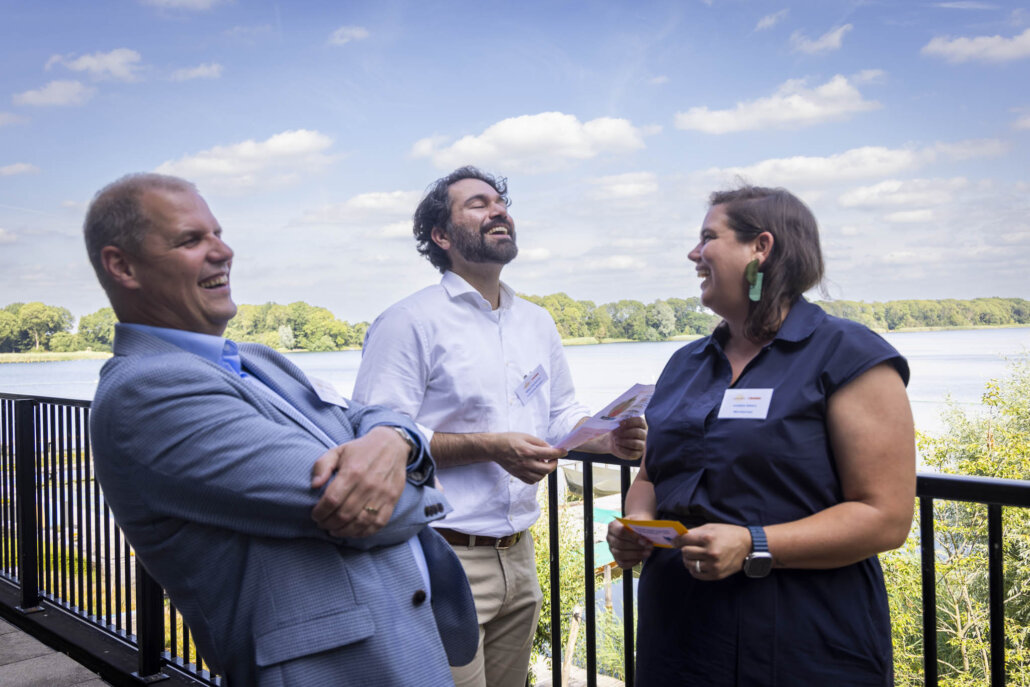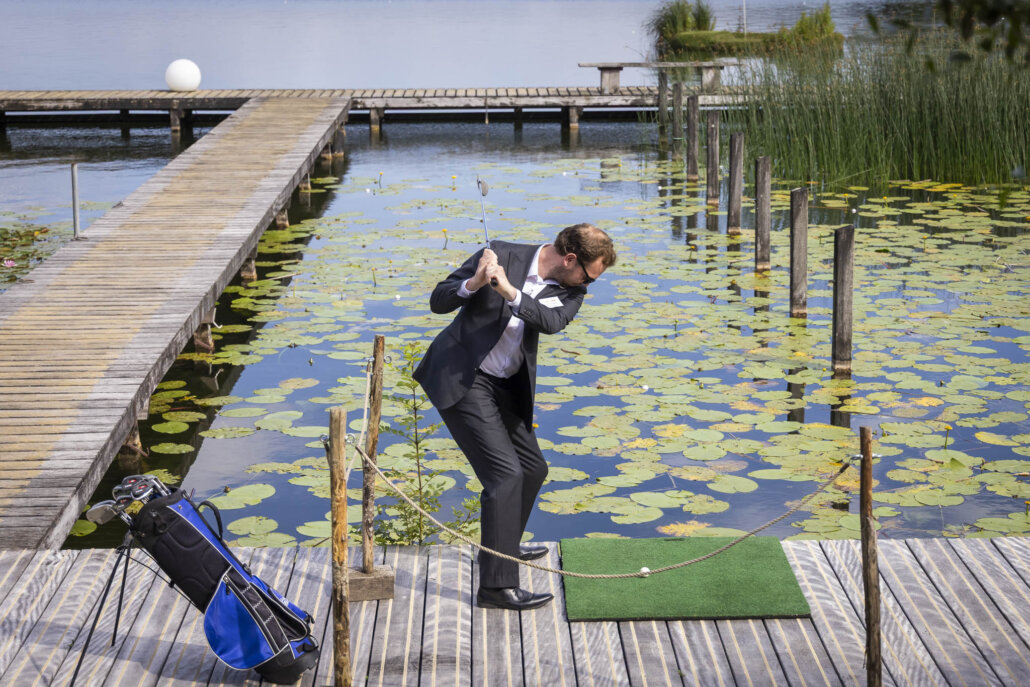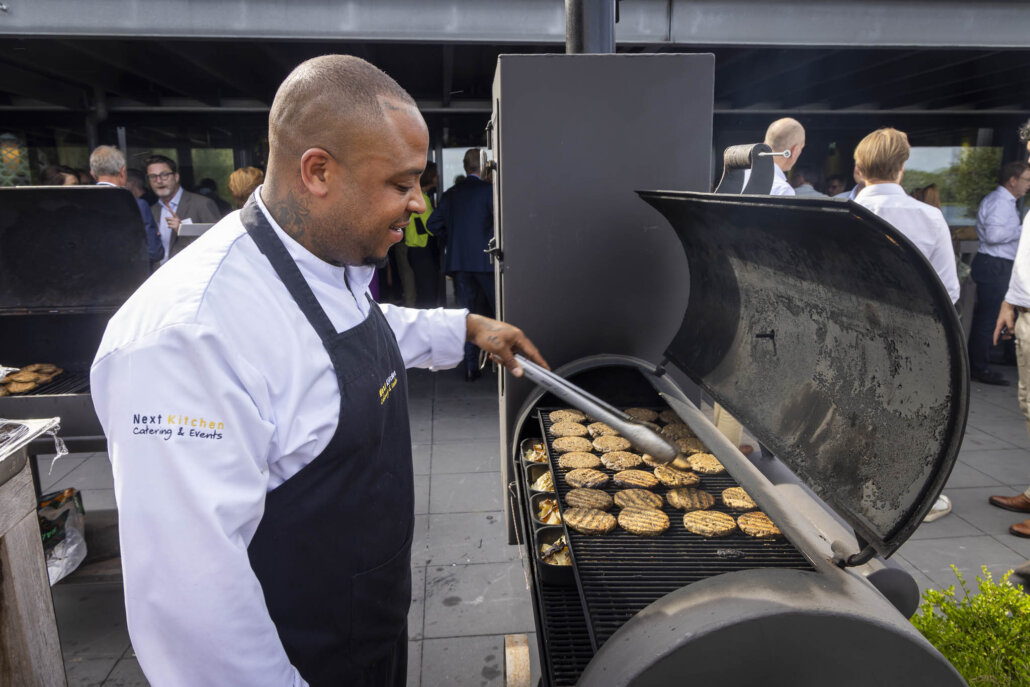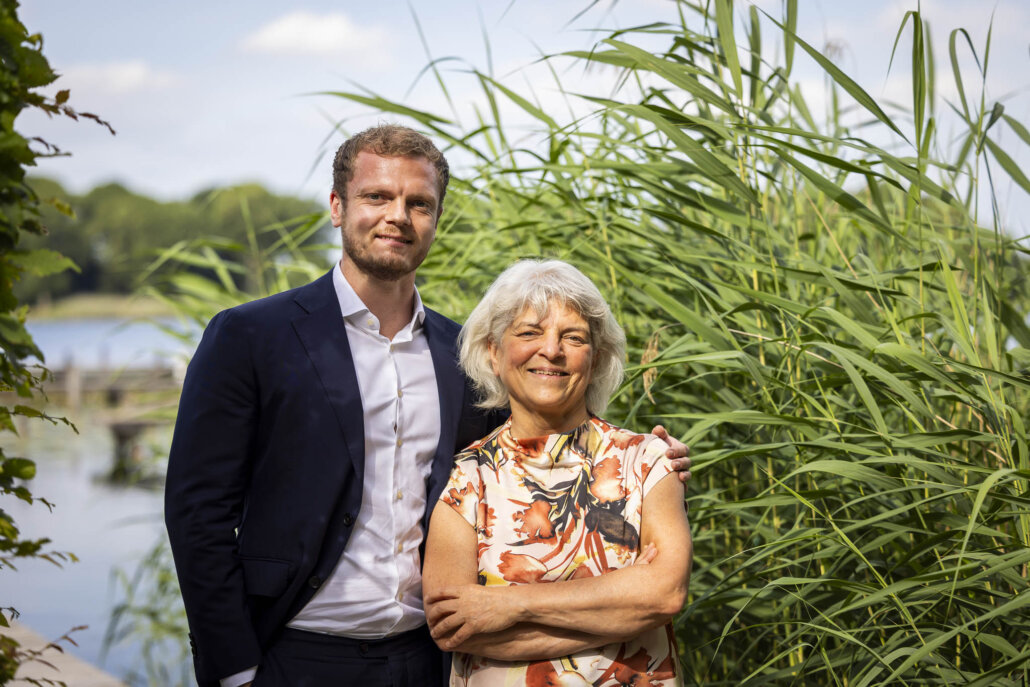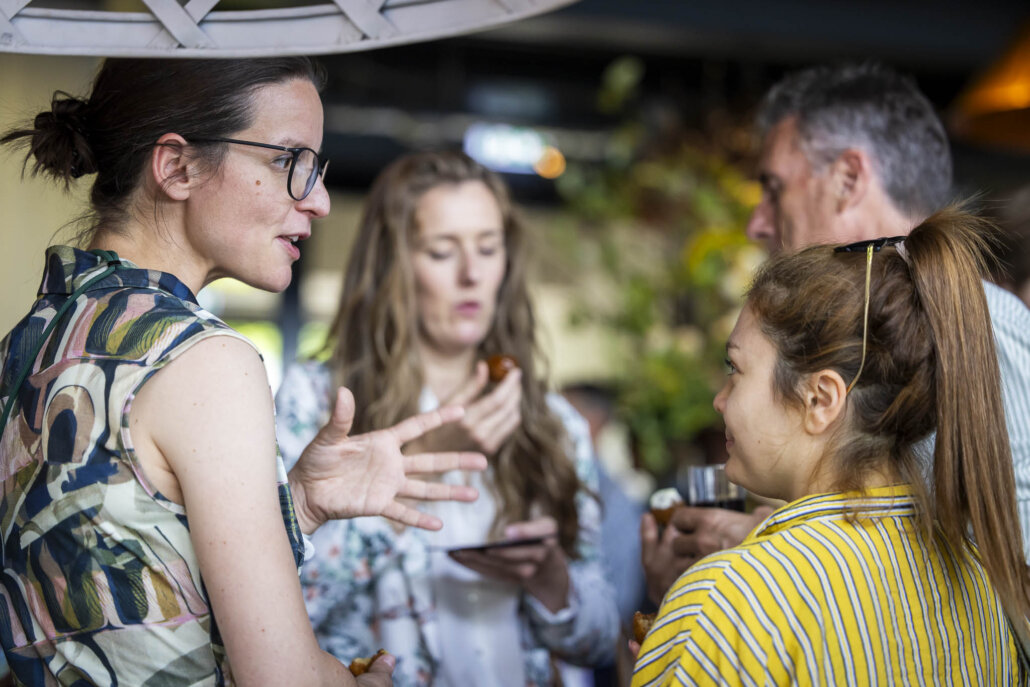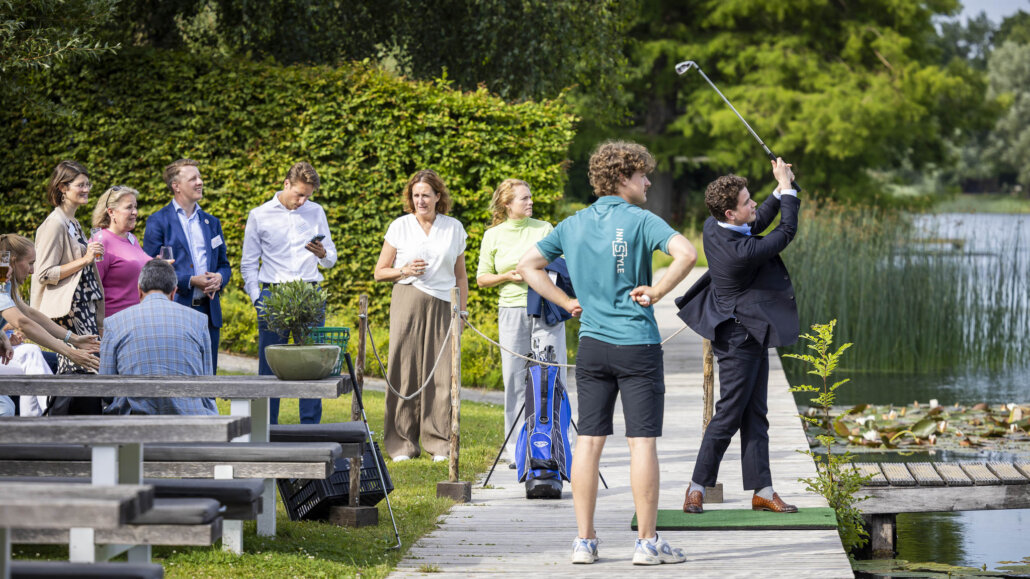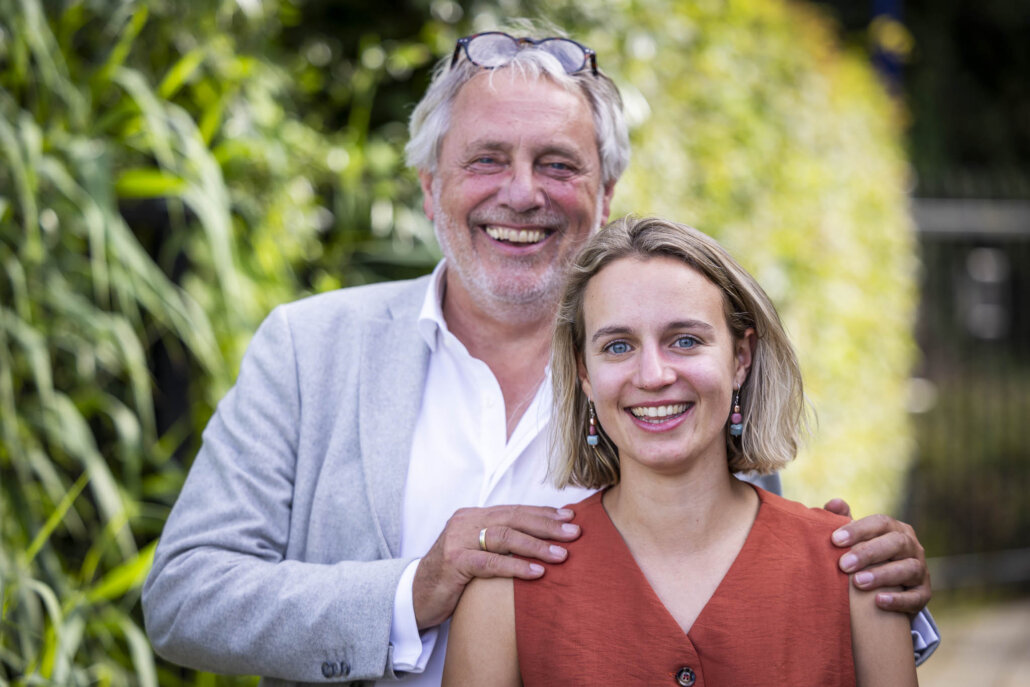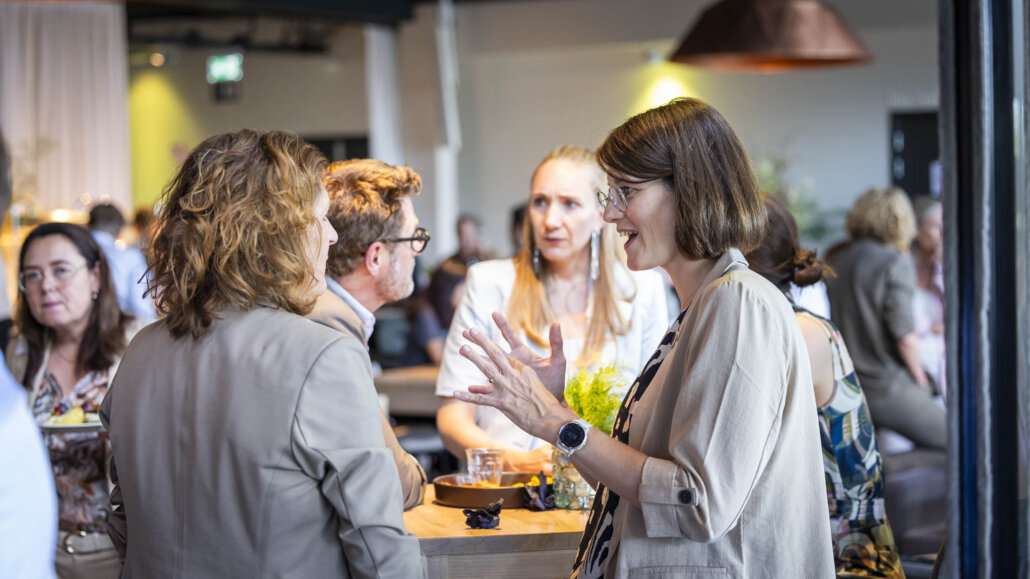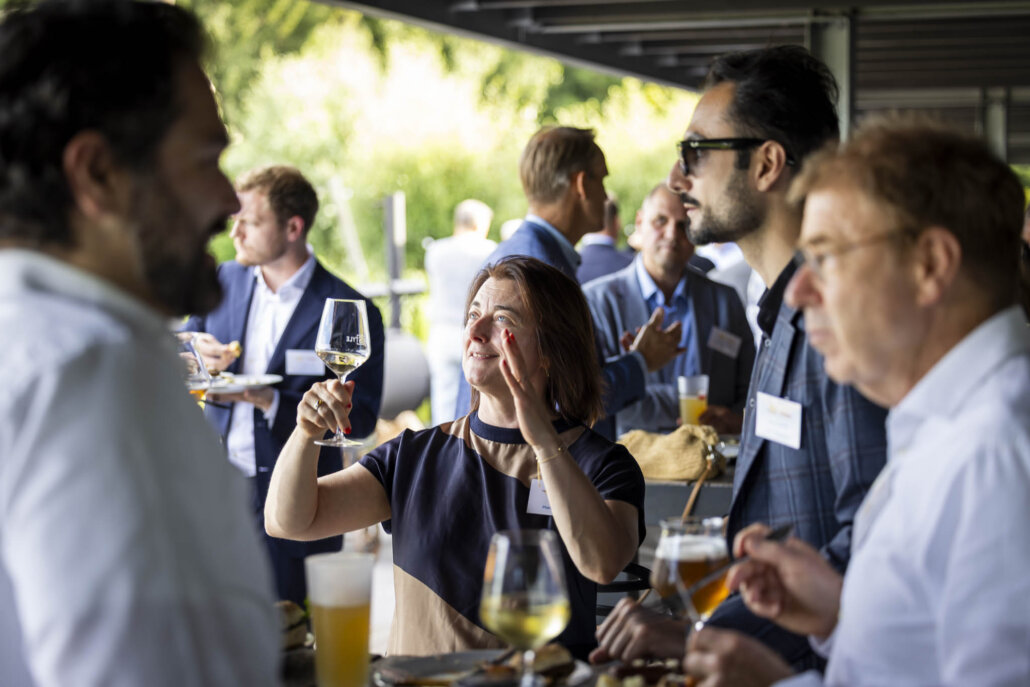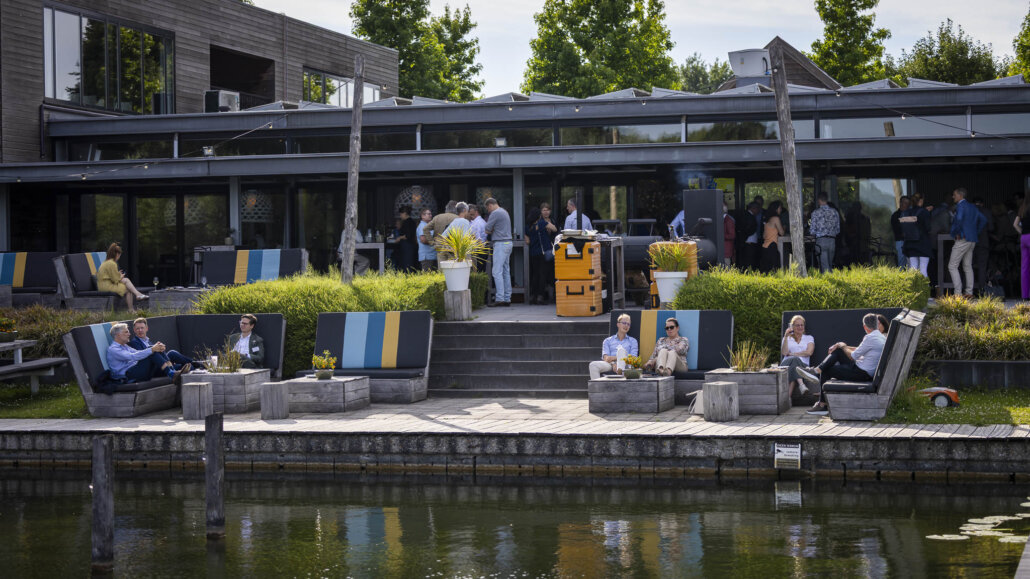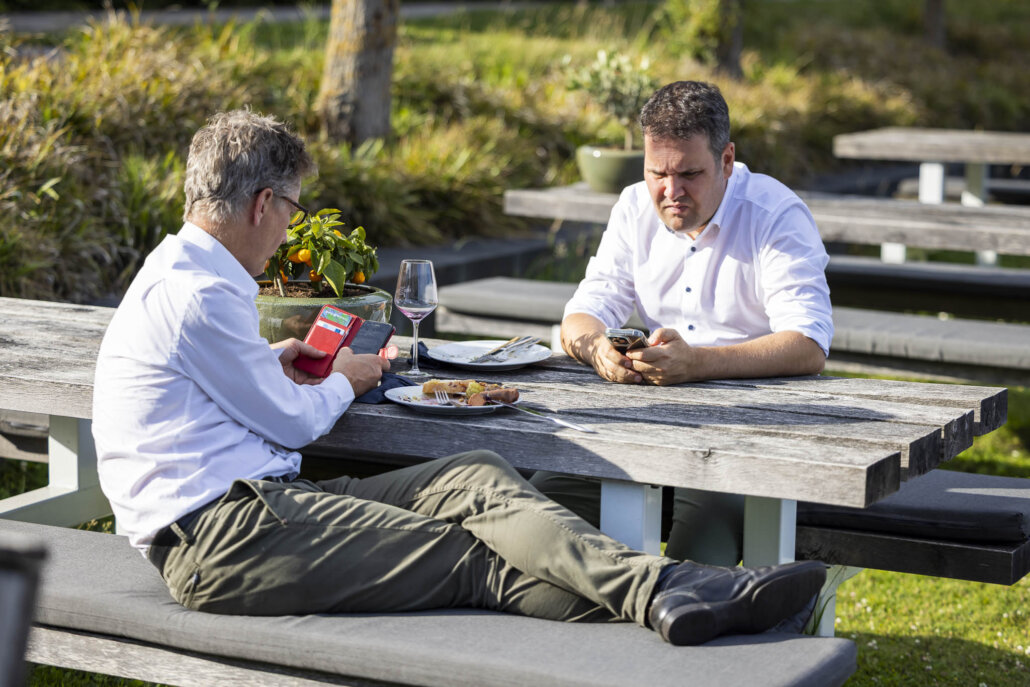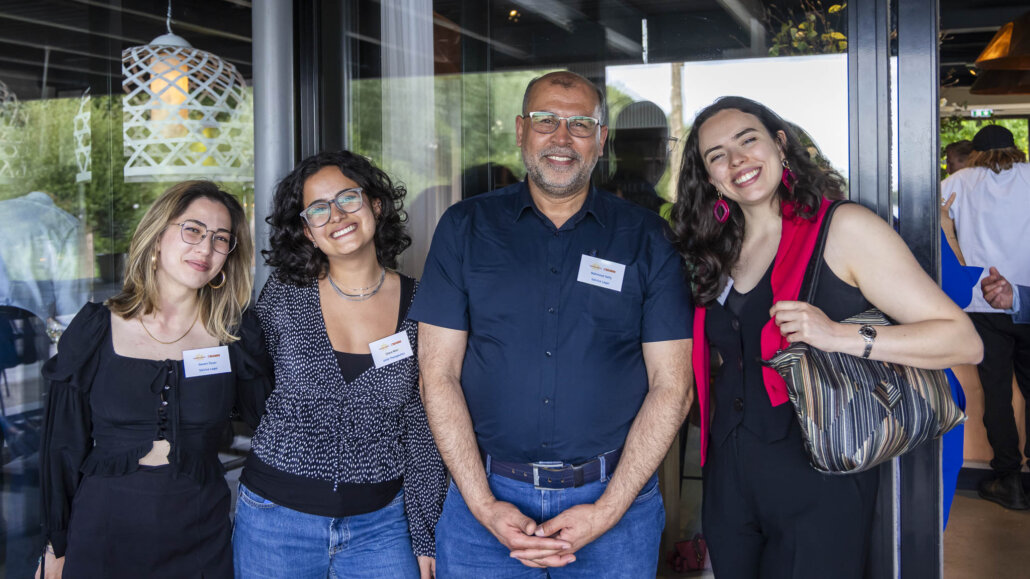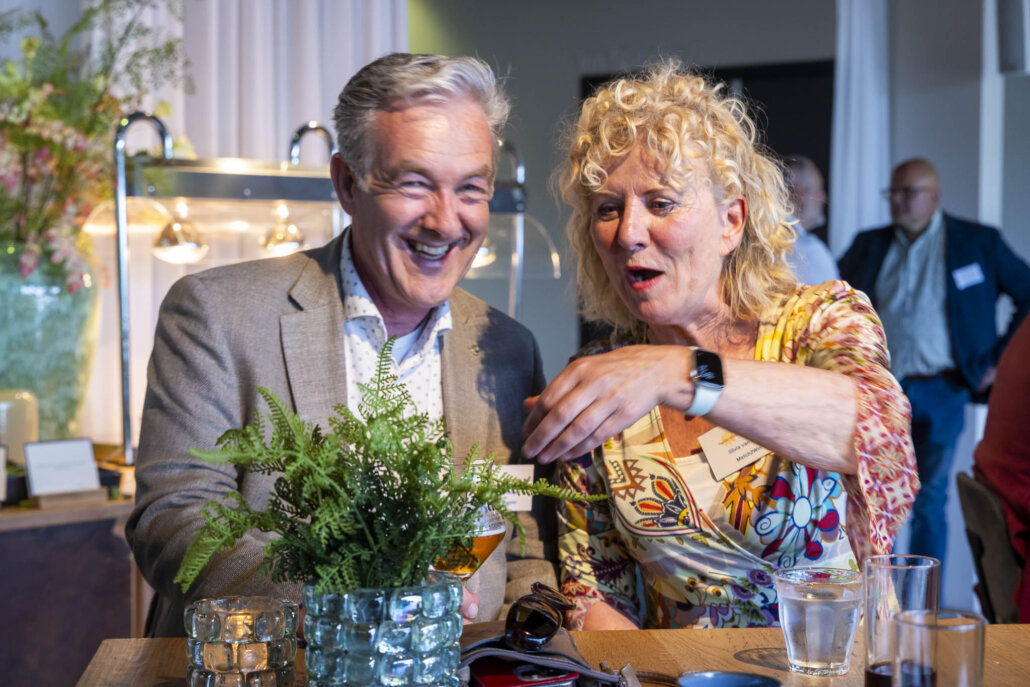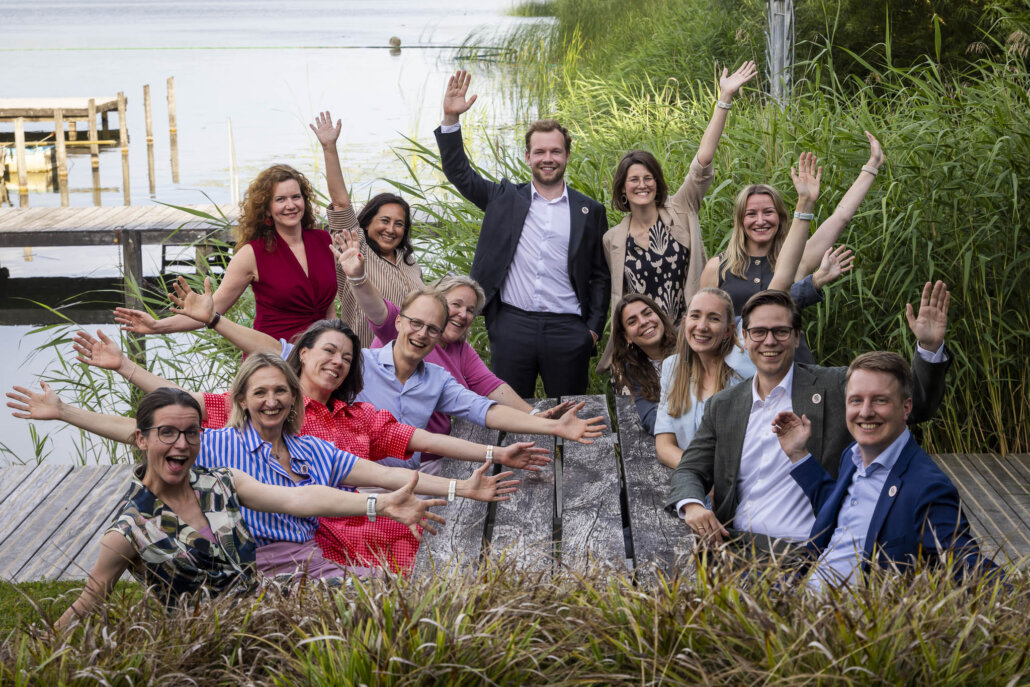Dutch Biotech Event brings together people for progress
Last Friday, the Dutch biotech ecosystem came together again to celebrate the power of biotech and the people who try to harness it for progress. With a great line-up of inspiring keynotes and fascinating break-out sessions, this year’s program highlighted once more that people working in biotech will go above and beyond to positively impact the wellbeing of people, animals and our planet.
Hollandbio’s Annemiek kicked off the event with nearly 300 participants with a warm welcome at the beautiful lakeside venue of Innstyle, Maarssen. She highlighted that progress through biotech depends on three key questions: are we able, allowed, and willing to bring biotech innovations forward? In that sense, the Dutch government vision on biotechnology can be considered a breakthrough as it encompasses all these three aspects – although we still need to turn it from words into concrete action.
Despite strong support for biotech in both national and European strategies, Annemiek challenged the audience with a pressing question: what’s holding us back? “Too much talk, too many rules, and too little action,” she said, warning that if we don’t act soon, the Netherlands risks losing its leading position. With the EU Biotech Act currently in development, now is the time. As Annemiek put it: “We need to make bold moves, to make real impact.”
We’ve got some homework to do: pledge your support at www.hollandbio.nl/actnow and share your vision!
Annemiek concluded with an exciting announcement: the exclusive hollandbio Members Platform is now live! On the platform, our members can find member-only updates, get in contact with other members, find an overview of our events and learn more about our member benefits. Have a look yourself!
The baton was then handed over to Chretien Herben, who has headed the Venture Challenge for over 20 years now. In recent years, there have been multiple competitions a year, spawning and raising a new generation of biotech entrepreneurs. After short pitches from all the finalists, NeuroNovaTX came out as the winner, developing an innovative intranasal stem cell therapy to treat newborn babies suffering from early life brain injury.
Annemiek then introduced the first keynote of the plenary program, Jan Smeitink. As CEO of biotech company Khondrion, he shared a deeply personal journey spanning from his early career as a scientist, pediatrician and then professor up until the step into entrepreneurship to try and cure patients with mitochondrial diseases. He shared how, among others, shadows of the past, the right people at the right time, and a bit of luck and passion have led him along the way from science to quite cumbersome negotiations with a technology transfer office to now a company setting up a Phase III clinical trial and actually treating patients.
During the intermezzo towards the second keynote, Chretien made a comeback but now for the pitches of the BioBusiness Masterclass in its revamped form. This course aims to bring about a new generation of biotech leaders, as it has brought to life lots of startups, entrepreneurs, and professionals in the past. The BioBusiness Masterclass is all about personal development, group cases and competition. The two final teams (MimeCure and Lumox) were given the opportunity to pitch after which MimeCure was announced as the winner.
The second keynote on the stage was Katelijne Bekers, CEO at MicroHarvest – a German-Portugues biotech company all about delivering better protein ingredients with the help of biotech. She started off in science and started a PhD with the aim of making the world greener but quit that trajectory because she’d rather translate this science from the lab into society. From roles in engineering and scaling up at Corbion and Bio Based Europe Plant, she went on to Ohly where she also did an MBA, in her own words to “be able to talk about biotech in a language that businesspeople understand.” After some contemplation about how she could really make a difference in the world, Kate started MicroHarvest, with her co-founder. They kicked off with the desired endpoint in mind: big clients need hundreds or thousands of kilograms of product for a test trial, while startups mostly only manage twenty kilograms. With the help of modern biotech and a strong focus on process innovation, diversity in people and room for ideas and room for failures to learn from, MicroHarvest has scaled up to production of more than a ton per day within four years with applications in for example, pet food. Katelijne concluded by looking ahead, with the company making the shift from specialty markets to commodity markets and “preparing to build its own production facility – something investors really hate.”
After a networking break, it was time for the breakout sessions with several themes at the heart of entrepreneurs and companies, of which there were four in total:
Unlocking boardroom brilliance: how to build an effective board
This session offered an insightful and interactive discussion on how to build and run effective boards. One key topic was the value and definition of an independent board member, including the challenge of attracting them at an early stage. As Shelley Margetson (V-Bio Ventures) noted, “Independent board members bring a different network and point of view,” and ideally, “if you have an independent board member, make them the chair.” Fred Dom (Seven Pines Holding) emphasized the importance of clarity: “Be clear upfront when a new board member arrives—what type of role they have and what decisions they will be involved in.” He also reminded us that “the CEO is not there to please the board. The CEO’s responsibility is to serve the company.” A memorable takeaway came from Shelley: “Never assume board members will remember what you told them earlier. Bring them back to speed every time, they have more going on.”
Culture counts: How to build a biotech company people want to work for?
This session offered a lively and thought-provoking exploration of what makes company culture truly matter. To kick-off the discussion, hollandbio’s Wieteke shared some thoughts on what an innovative culture entails and how to foster great places to work. Then, three panelists offered diverse perspectives from their own cultural journey. Violette Defourt (Rapidemic) shared insights from a startup lens, Marco Fossatelli brought experience from biotech leadership and consultancy, and Sylvia Stam (Galapagos) reflected on culture within a large, publicly traded company. A recurring theme was that culture isn’t static or easily defined; it must be continuously nurtured, especially during change. The panel emphasized that culture should be authentic, lived daily, and embedded in everything from hiring to leadership behavior. Together with the audience, they discussed how to make culture tangible—beyond mission statements—through open dialogue, shared values, and conscious effort. The key takeaway? Culture counts—but only if you make it count.
Biotech financing trends: Does the winner take it all?
What are the current financing trends in the biotech investment landscape? The Dutch life sciences sector sees a decline in new biotech company foundation, but an increase in the level of funding amounts raised by established biotech companies, leading to a ‘winner takes all’ effect. Is this effect specifically occurring in the Netherlands, or is it a global trend? Moderator Jan de Kerpel (Van Lanschot Kempen) discussed this together with Thom Frielink (Curie Capital), Prashanthi Ramesh (EQT Life Sciences) and Sijme Zeilemakers (Sapreme Technologies) and a room full of curious biotech professionals. The conclusion? Yes, there were fewer exits and the circle of investments needs to complete before it can start something new. Not every idea has enough upside, there are funds available when you tick all the right boxes. If not, tough times are ahead.
Synergizing for success: How to profit from your collaborations?
What does collaboration look like for you? How do you make the most of the collaborations you are a part of, and which shapes can these collaborations take? Under the expert guidance of Marije Martens (Twynstra Gudde), we dove deep into all these questions. Turns out: it matters a lot how a collaboration is set up. Whether it is a very hierarchical design with a clear leader taking the decisions, or a more loosely defined coalition of people trying to reach a shared goal, all models have their place, their value and their caveats. Like one of the attendees shared at the end: “This session really helped me put into perspective why working together doesn’t always run smoothly but also gave me insight in how 1 and 1 can equal 3.”
We want to thank all speakers, participants, and fellow organizers for making this year’s edition another great success. We hope you enjoyed it as much as we did to meet other biotech professionals and enthusiasts, and exchange the struggles, possibilities and passions of working in this ambitious sector!
